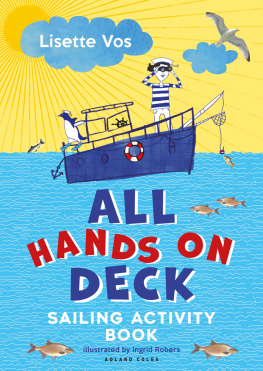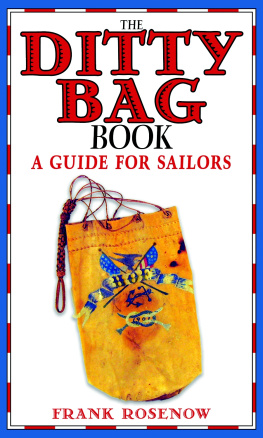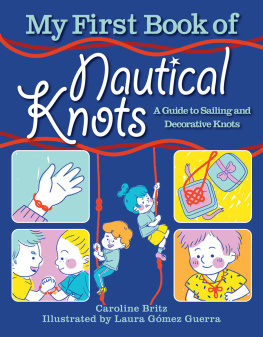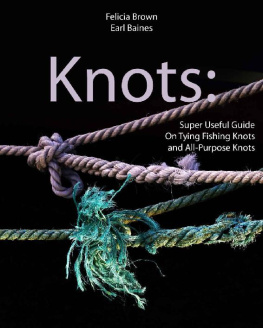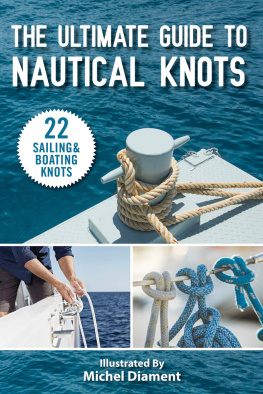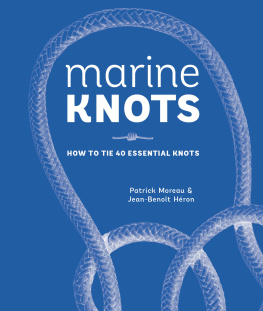
To my granddaughter.
Copyright 2014 by International Marine/McGraw-Hill Education. All rights reserved. Except as permitted under the United States Copyright Act of 1976, no part of this publication may be reproduced or distributed in any form or by any means, or stored in a data base or retrieval system, without the prior written permission of the publisher. The name International Marine and all associated logos are trademarks of McGraw- Hill Education. The publisher takes no responsibility for the use of any of the materials or methods described in this book, or for the products thereof.
ISBN: 978-0-07-180211-6
MHID: 0-07-180211-8
The material in this eBook also appears in the print version of this title: ISBN: 978-0-07-178998-1, MHID: 0-07-178998-7.
E-book conversion by codeMantra
Version 1.0
All trademarks are trademarks of their respective owners. Rather than put a trademark symbol after every occurrence of a trademarked name, we use names in an editorial fashion only, and to the benefit of the trademark owner, with no intention of infringement of the trademark. Where such designations appear in this book, they have been printed with initial caps.
International Marine/McGraw-Hill Education books are available at special quantity discounts to use as premiums and sales promotions or for use in corporate training programs. To contact a representative please visit the Contact Us pages at www.mhprofessional.com.
TERMS OF USE
This is a copyrighted work and McGraw-Hill Education and its licensors reserve all rights in and to the work. Use of this work is subject to these terms. Except as permitted under the Copyright Act of 1976 and the right to store and retrieve one copy of the work, you may not decompile, disassemble, reverse engineer, reproduce, modify, create derivative works based upon, transmit, distribute, disseminate, sell, publish or sublicense the work or any part of it without McGraw-Hill Educations prior consent. You may use the work for your own noncommercial and personal use; any other use of the work is strictly prohibited. Your right to use the work may be terminated if you fail to comply with these terms.
THE WORK IS PROVIDED AS IS. McGRAW-HILL EDUCATION AND ITS LICENSORS MAKE NO GUARANTEES OR WARRANTIES AS TO THE ACCURACY, ADEQUACY OR COMPLETENESS OF OR RESULTS TO BE OBTAINED FROM USING THE WORK, INCLUDING ANY INFORMATION THAT CAN BE ACCESSED THROUGH THE WORK VIA HYPERLINK OR OTHERWISE, AND EXPRESSLY DISCLAIM ANY WARRANTY, EXPRESS OR IMPLIED, INCLUDING BUT NOT LIMITED TO IMPLIED WARRANTIES OF MERCHANTABILITY OR FITNESS FOR A PARTICULAR PURPOSE. McGraw-Hill Education and its licensors do not warrant or guarantee that the functions contained in the work will meet your requirements or that its operation will be uninterrupted or error free. Neither McGraw-Hill Education nor its licensors shall be liable to you or anyone else for any inaccuracy, error or omission, regardless of cause, in the work or for any damages resulting therefrom. McGraw-Hill Education has no responsibility for the content of any information accessed through the work. Under no circumstances shall McGraw-Hill Education and/or its licensors be liable for any indirect, incidental, special, punitive, consequential or similar damages that result from the use of or inability to use the work, even if any of them has been advised of the possibility of such damages. This limitation of liability shall apply to any claim or cause whatsoever whether such claim or cause arises in contract, tort or otherwise.
Contents
Introduction
T his book is based on the principles of marlinspike seamanship, a term used in the marine trades to describe rope work, wire work, and knots. Sailors use practical marlinspike seamanship skills to make, customize, or fix a boats running rigging, anchor lines, docklines, and other ropes and wires used to operate a boat and keep the crew safe.
Sailors also use their marlinspike seamanship skills to make decorative items, called fanciwork. A sailor might employ fanciwork to decorate his ditty bag or sea chest. He or she might tie a wide, flat sennit (braid), or a series of knots to serve as a lanyard for a belt or knife, or tie a decorative flat knot to use as a trivet or doormat.
Earth-Friendly Shellacking
When it was first suggested to me that I write an earth-friendly knot book, I thought to myself, how easy! Knot tyers the world over have been demonstrating their skills for hundreds of years in leather, cotton, hemp, and colorful silks. However, one small but important part of knot tying almost stopped me in my quest: what to use for glue and coating? Ive always loved shellac, but how could I get around the use of denatured alcohol? What did the artisans of old use in place of the toxic stuff? I realized that I needed to use a different form of alcohol. Feeling a little weird, I explained what I was searching for to the first clerk in the first liquor store I happened upon. Nancy Laboissonniere listened to me carefully, and when I finished my story she stepped from around the counter and disappeared down the aisle, a moment later returning with a bottle of pure grain alcohol in her fist.
This will do it, she explained.
All I could say was Wow, how do you know this?
I have a masters degree in clinical laboratory science from the University of Rhode Island, she answered.
Im delighted to report that grain alcohol works better than denatured alcohol for dissolving the shellac flakes.

Grain alcohol can be used instead of denatured alcohol when working with shellac flakes, making the entire process much more enjoyable.

The overhand knot is the most common knot and serves as the base for many more complex knots.

The square knot has many practical purposes.

What I call a package knot is kind of a nick name. The sailors (and others in the trade) tie the first part of the square knot with an extra turnthat way one can tie the rest of the square knot without asking someone to hold it with their finger so it wont slip. The package knot is a binding knot. A true package knot is tied completely differently.
If you look around, you will see knots everywhere and tied into all sorts of strings and ropes: the overhand knot used for sewing, the bow knot used to tie shoelaces, the square knot used to bundle newspapers or branches for recycling. This book focuses on using simple knots such as these to make both practical and decorative projects.
We start the book with two basic knots, the Turks Head knot (described in .
Overhand knots arranged in a special way turn into a truckers hitch that will hold a bundle of branches effortlessly. The overhand knot is also the starter knot for netting, described in .
There is a saying that perfectly reflects the theme of this book: Whats old is new again. All knots begin with a piece of rope or cordage, and explains how to make rope and how to use this homemade rope in several projects. (See the Choosing Cordage section in this chapter for advice on purchasing cordage.) Ropes and cordage have been made like this since the time of the Pharaohs. Lengths of cordage or rope twisted from papyrus fibers have been found in Egyptian tombs. Shellac, used as a coating in some of the projects in this book, was used as a finish for wooden items in China since the time of the Emperor Tang.
Next page

